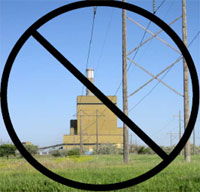 This is a great day for clean energy and people’s health: Today the Environmental Protection Agency (EPA) overturned the State of South Dakota’s approval of the massive Big Stone II coal-fired power plant. The EPA’s decision comes after the state failed to require state-of-the-art pollution controls for the coal plant – controls that would address harmful soot, smog and global warming pollution.
This is a great day for clean energy and people’s health: Today the Environmental Protection Agency (EPA) overturned the State of South Dakota’s approval of the massive Big Stone II coal-fired power plant. The EPA’s decision comes after the state failed to require state-of-the-art pollution controls for the coal plant – controls that would address harmful soot, smog and global warming pollution.
Today’s decision is also a victory for the rule of law – with the EPA signaling that it is back to enforcing long-standing legal requirements fairly and consistently nationwide and that they’re concerned about pollution and global warming.
As the first major coal plant decision by the EPA since President Barack Obama took office, this signals that the dozens of other coal plant proposals currently in permitting processes nationwide will face a new level of federal scrutiny.
The proposed Big Stone II 500-megawatt coal plant would have emitted more than 4 million tons of global pollution annually. The Sierra Club and Clean Water Action have been working to stop the Big Stone II project and ramp up clean energy investments in for more than three years.
This decision also likely spells the end of Otter Tail Power’s Big Stone II coal plant. At a minimum, Otter Tail Power will have to go back to the drawing board and redesign the project to incorporate the best and maximum available control technology for pollution like soot and smog.
Otter Tail Power will now have to be responsible for the cost of its pollution. We hope that this increasing cost of coal will encourage Otter Tail Power, along with Governors Tim Pawlenty and Mike Rounds, to harness the clean and affordable wind resources available in the region. Minnesota and South Dakota should be leaders on the path to renewable energy independence, not laggards proposing 19th century coal plants.
We will also continue pushing the EPA to set limits for carbon dioxide, the main contributor to global warming.
With coal-fired power plants accounting for almost 30% of our nation’s carbon dioxide emissions, burning less coal and investing in clean energy such as wind and solar instead is a common sense approach to helping meet global warming pollution reduction goals.
Update: Minnesota Public Radio Story here.
And click here to go to our Compass blog to read the EPA documents.